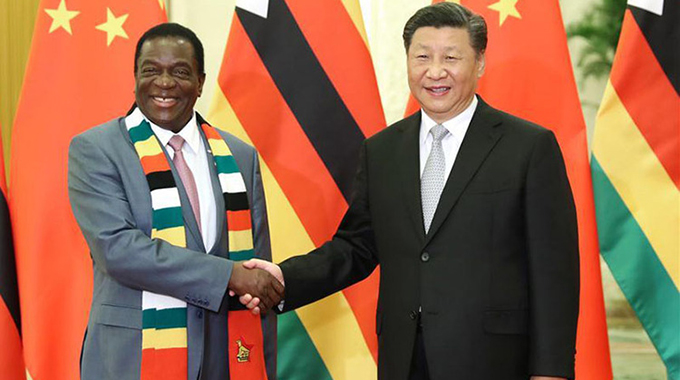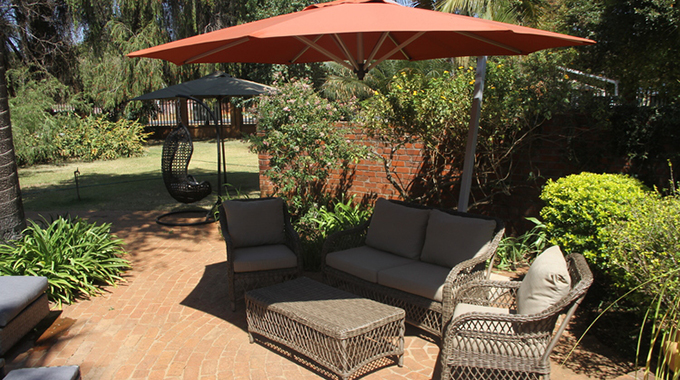FOCAC: Dynamic framework for China-Africa cooperation

Special Correspondent
IT is now one year since the hugely successful third Forum on China-Africa Cooperation (FOCAC), which also came up with the Beijing Action Plan (2019-2021) to govern Sino-Africa relations and cooperation until 2021.
The summit, which reaffirmed and deepened relations between China and Africa, saw Chinese President Xi Jinping pledging US$60 billion in financing for projects in Africa in the form of assistance, investment and loans, as he scaled up cooperation between Beijing and the continent.
President Xi emphasised that the money had “no strings attached”, but was meant to boost cooperation between China and Africa.
The figure includes U$15 billion in grants, interest-free loans and concessional loans, US$20 billion in credit lines, US$10 billion for development financing and US$5 billion to buy imports from Africa.
In addition, President Xi encouraged companies to invest at least US$10 billion in Africa between 2018 and 2021.
On a broad scale, the summit strengthened cooperation in various fields including, political, economic, social development cooperation, culture, peace and security cooperation and international cooperation.
The summit was attended by about 50 African Heads of State, including Zimbabwean President Mnangagwa, showing that both the Chinese side and the African side value the ever-strengthening relations and are keen to further deepen them.
Is FOCAC 2018 bearing fruit?
The FOCAC 2018 summit, like previous summits, has been a tremendous success as seen by progress emanating directly from the summit. In Zimbabwe, for example, a US$100 million China-Aid funded New Parliament Building is being constructed in Mt Hampen by Shanghai Construction Group — one of the best construction and engineering companies in the world.
The building, whose architecture is inspired by the Great Zimbabwe monument in Masvingo, is the first project in the country’s proposed new capital city.
President Mnangagwa presided over the ground-breaking ceremony for the project on November 30, 2018, two months after the end of the FOCAC summit. Construction is ahead of schedule with the constructor now working on the sixth floor of the six-storey building. Also taking a cue from President Xi’s encouragement, a private company Sunny Yi Feng Private Limited has set up a massive tiles manufacturing plant in Norton.
The company started manufacturing tiles in May, and is producing between 30 000 and 35 000 square metres of tiles per day.
It is exporting 70 percent of the tiles to SADC countries, including South Africa, Malawi, Zambia, Botswana, Democratic Republic of Congo and Mozambique, thereby earning the much needed foreign currency.
The company employees 1 193 locals at a time economic challenges have forced many companies to either retrench or downsize.
Sunny Yi Feng is also setting up equipment in preparation for establishing a tableware manufacturing plant, which will bring diversity to its product, while increasing its capacity to employ and generate foreign currency.
In early June 2019, Zimbabwe and China signed grants worth RMB400 million (US$58,1 million) on the sidelines of a follow-up meeting to agreements made during the Forum on China-Africa Cooperation (FOCAC) held last year.
At the same time, a Memorandum of Agreement on wildlife protection worth millions of dollars was also signed between Zimbabwe and China, while agreements on the Phase 3 NetOne expansion project was signed later.
As new batches of its aid to Zimbabwe in 2019, the Government of China has recently decided to provide a series of aid totalling US$13 million from South-South Cooperation Assistance Fund to WFP (World Food Programme), UNDP (United Nations Development Programme) and UNICEF (The United Nations Children’s Fund), for providing emergency food assistance in Zimbabwe, repairing housing units, schools and clinics in the areas affected by Cyclone Idai, and providing living materials and health protection for women and children in the country. This is just part of China’s aid provided to Zimbabwe this year.
Right after the Cyclone Idai, China swiftly provided to Zimbabwe US$80 000 in cash for emergency humanitarian assistance.
The food aid provided through bilateral channels just for this year — the donation of 10 165 tonnes of rice, and the free aid of drilling of 500 boreholes are being implemented. In the past few years, China has completed drilling 500 boreholes in Zimbabwe as free aid.
Chinese business persons remain committed to investing in Zimbabwe as seen by a visit by a delegation of 37 business persons in February.
They came to scout for investment opportunities, in line with President Xi’s encouragement and agreements struck by the Chinese leader and President Mnangagwa when he visited Beijing last year.
The team met President Mnangagwa at his Munhumutapa offices, where he noted that a number of deals sealed during his inaugural visit to China where being implemented.
These include the Hwange Thermal Power Station 7 and 8 expansion project and the Robert Mugabe International Airport expansion.
It is also important to note that the Chinese State Advisory Council visited Zimbabwe to support the Government with research and economic development strategy as relations between the two countries continue to grow.
It was the first time that the Development Research Centre (DRC) of the State Council of the People’s Republic of China has been given permission to assist a country outside its economic jurisdiction.
The visit followed the signing of a Memorandum of Understanding between the two countries by Finance Minister Professor Mthuli Ncube and a representative of the DRC of the State Council during the ministerial forum of FOCAC and China Africa Expo in Beijing on June 26 this year.
The experts will assist the country in developing its strategic plans.
“In this regard the mission will conduct research and field studies on the agreed areas of cooperation among them, infrastructure development and financing strategy; macro-economic stabilisation and enhancement of the business environment; and industrial structure transformation policy through value addition and beneficiation of natural resources,” Prof Ncube said, when the team visited.
Zimbabwe is Africa’s biggest tobacco producer and the fifth largest in the world. China has made great contribution to the development of tobacco industry in Zimbabwe.
In the just concluded tobacco season, China has purchased half of all the tobacco produced which is worth more US$600 million, according to the country’s Tobacco Industry and Marketing Board (TIMB).
But there has been progress elsewhere in Africa other than Zimbabwe.
In Namibia, for example, a new Chinese-built port terminal which doubles its container capacity and is also intended to give tourism a boost was inaugurated last month.
The 40-hectare platform, reclaimed from the sea at Walvis Bay, 400 kilometres west of Windhoek, is to become a strategic gateway to emerging markets of southern and west Africa.
The terminal was built by state-owned China Harbour Engineering Company at a cost of about US$280 000.
“The completion of the container terminal expansion puts us on a firm trajectory towards realising our dream of transforming Namibia into an international logistics hub,” President Hage Geingob said at the inauguration ceremony last month.
A “State of Logistics” report released by the Walvis Bay Corridor Group last year said the terminal would increase the capacity of the port to 750 000 containers per year from 350 000, with the potential to go over a million in the future.
In Ethiopia, the Chinese built Dire Dawa Industrial Park is nearing completion. According to the Ethiopian Investment Commission (EIC), the US$158 million industrial park is expected to host investors from such sectors as heavy industries, textile and apparel, vehicle assembly, food processing, electronics, and chemicals.
The government expects the industrial park to create direct and indirect job opportunities for close to 40 000 Ethiopians.
Ethiopia earned US$142 million in exports from Chinese-built industrial parks during the 2018-19 fiscal year, an increase of 50 percent year-on year.
Success stories have also been recorded in several African countries.
More evidence of success
Since the first FOCAC ministerial conference in Beijing in 2000 under the theme “building a new international political and economic order and China-Africa economic and trade cooperation for the 21st century”, Sino-Africa relations have been growing with tremendous benefits for both sides.
As reflected by Yang Jiechi, a member of the Political Bureau of the CPC Central Committee and Director of the Office of the Central Commission for Foreign Affairs at the Group Meeting with the Heads of African Delegations Attending the Coordinators’ Meeting on the Implementation of The Follow-up Actions of the FOCAC Beijing Summit in June, trade between China and Africa has blossomed as relations grew.
“Two-way trade surpassed US$200 billion again in 2018, with China continuing to be Africa’s largest trading partner for the tenth year in a row and investing upwards of US$110 billion in Africa,” Yang said.
“Since the launch of the eight major initiatives, good progress has been made in allocating the US$60 billion funding and in carrying out infrastructure and production capacity projects that are important to Africa.”
Yang also noted that China provided emergency assistance to Mozambique, Zimbabwe and Malawi in the wake of tropical cyclones that hit southern Africa this year.
Impact of the FOCAC
As highlighted by an article written by respected scholars Zeng Aiping and Shun Zhan, FOCAC has had “profound and significant impacts on China-Africa relations, China’s multilateral diplomacy, Africa’s development and international status, as well as global governance”.
“Driven by the forum, the trade volume between China and Africa has been increasing quickly,” Zeng and Zhang wrote. “Since 2009, China has been the biggest trade partner of Africa. In 2017, the trade volume was US$170 billion and Chinese enterprises’ non-financial direct investment in Africa reached US$3,1 billion. China has become one of the most important sources of investment and finance for Africa. Motivated by the forum’s measures, more and more Chinese state-owned and private enterprises have made their investment in Africa. By 2017, there had been more than US$100 billion worth of Chinese investment and finance in Africa.”
“In Ethiopia, Kenya, Djibouti, Mozambique, the Democratic Republic of the Congo, Algeria, Zambia and Côte d’Ivoire, China has become the primary source of foreign direct investment.”
“China has invested heavily in the construction of railways, highways, airports, ports, bridges, hydropower stations, natural gas pipelines and telecommunication infrastructure projects in Africa, which has consolidated the foundation of African countries’ integration and economic take-off.
“Infrastructure construction has become the best-known brand of China-Africa cooperation, and also the largest factor for China’s positive image in Africa. By 2017, China had financed and built for Africa 6 200 kilometres of railways, 6 500 kilometres of road, 20 seaports, 20 bridges, over 80 power plants, more than 200 schools, and 80 plus stadiums.”
In Zimbabwe, major projects undertaken include the US$533 million Kariba South Hydro Power Extension project which was commissioned by President Mnangagwa in March last year, adding 300 megawatts to the national power grid.
China has also assisted with the construction of economic and trade cooperation zones, industrial parks, export processing zones and special economic zones which have provided the Asian country good platforms to invest.
These have been built in several countries including Egypt, Ethiopia, Nigeria, Uganda and Zambia.
“In the field of African peace and security, China is now the permanent member of the UN Security Council that sends the largest number of peacekeeping soldiers and police to Africa. More than 2 500 Chinese peacekeepers are carrying out UN missions in Africa,” they noted.
What is the way Forward for Sino-Zimbabwe relations?
Zimbabwe and China enjoy warm bilateral relations which date back to the liberation struggle, where the Asian nation assisted the country with weapons and provided training to many cadres.
Moreover, in 2008 China defended Zimbabwe at the UN Security Council when some members wanted full blown sanctions to be imposed on the country.
Relations between the two countries were last year, elevated from being “all-weather friends” to strategic partnership.
China has continued to support Zimbabwe, as shown by a willingness to invest in meaningful infrastructure projects, such as the Kariba South Power Extension, Hwange 7 & 8 and the expansion of Robert Mugabe International Airport and the Victoria Falls International Airport.
It should be noted that, at the moment, China is the only country investing in infrastructure development in Zimbabwe.
This is a testament of the good relations between the two countries.
There is, however, scope for more economic cooperation especially in infrastructure and agriculture development.
In infrastructure, Zimbabwe has railways infrastructure problems and yet China is one of the leading countries in the world.
China has capacity to develop state of the art railway infrastructure in the country and link the railway lines to neighbouring countries such as South Africa in the South and Zambia in the north, enabling Zimbabwe because of its strategic position to provide a gateway between Southern Africa and Central Africa.
The evidence of China’s capacity is there.
In East Africa, China has constructed the diesel-powered Mombasa-Nairobi Standard Gauge Railway in Kenya, and the Addis Ababa (Ethiopia)-Djibouti Railway, which is the first electrified railway of its kind in Africa.
A similar model can be followed with the roads.
The busy Beitbridge-Chirundu Highway needs to be dualised given the huge volume of traffic using the road daily. The road links Southern Africa to Central Africa, North and East Africa.
There is also room for more cooperation in agricultural development since the Zimbabwean economy is agro-based while China has advanced agricultural technology.
The good soils and climatic conditions in Zimbabwe make the country a suitable destination for enhanced agricultural cooperation.
There is, therefore, need for more practical action to enhance the economic cooperation between China and Zimbabwe.
China can do more in Zimbabwe and certainly, Zimbabwe should do more to attract and maintain Chinese investment.
With greater cooperation, both sides stand to benefit.










Comments